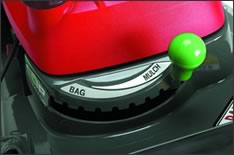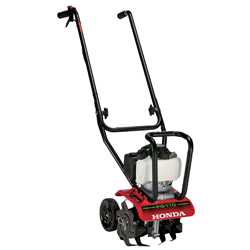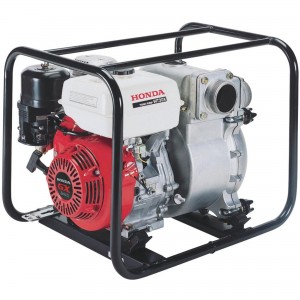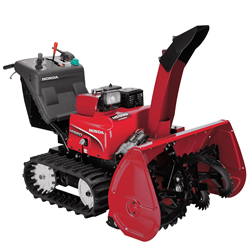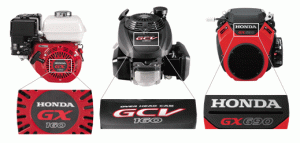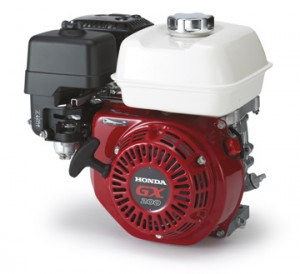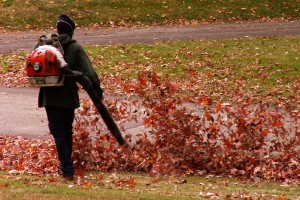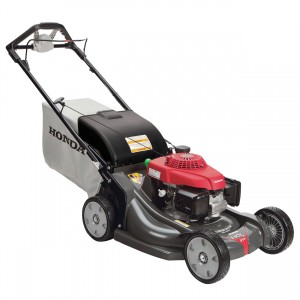 Is there something bugging you about your new mower? Do you think you could get better performance from it? These are the most frequently asked questions about Honda mowers from setting them up to getting parts that fit.
Is there something bugging you about your new mower? Do you think you could get better performance from it? These are the most frequently asked questions about Honda mowers from setting them up to getting parts that fit.Why Can’t I Tilt the Handle Into Place?
The flywheel brake is engaged, which is putting tension on a cable running on the side of the handle. Closing the bail will let you swing the handle into its operating position.
How Do I Discharge Clippings?
Set the Clip Director to “Bag” or “1.” If you don’t have a bag attached to the mower, clippings will fall out of the rear chute onto the ground.
Do I Need a Spark Arrester?
A spark arrester is a metal screen that traps sparks from the exhaust, preventing them from igniting vegetation. These devices may be required in areas experiencing a drought or that have highly flammable plants.
Arresters are not included from the factory, but they can be added to any Honda mower. The arrester attaches to the exhaust opening with a single screw and can be removed for cleaning. Over time, carbon buildup can fill the screen, restricting exhaust flow. This buildup can be removed with a wire brush.
How Do I Charge the Battery in My Mower?
Electric start models use a small battery mounted in a housing below the start button. The mower’s charging system recharges the battery as you mow. During the mowing season, this should be enough to keep the battery ready to start the engine.
Power may drop off during storage, requiring a recharge. This battery is too small to be safely charged with an automotive battery charger. Honda makes a low amp charger specifically for these small batteries. To use it, remove the battery from the starter box and connect it to this charger for 8-24 hours.
How Short Should I Cut My Lawn?
When cutting, the blade should trim the leaves, but not go through stems or crowns. Most turf grasses should be trimmed to around two inches tall.
Limit cutting to 1/3 of the grass’ total length. Cutting more at one time will make it harder for the grass to recover.
How Do I Mow Leaves?
For the best results, mow the leaves before coverage extends past the height of the grass. This may require moving two or three times per week when leaf fall is at its peak.
Lift the front of the mower one or two settings higher than the rear. This helps the deck draw in leaves instead of pushing them away. Set the Clip Director to “Mulch” or “9.” The mulch left by the mower should be broken down fast enough by your lawn that bagging won’t be needed. If you need to bag the leaves, install a leaf shredder in the discharge opening.
How Do I Store My Mower?
Drain any gas left in the tank, carburetor and fuel lines. Depending on your model, you may be able to drain everything by removing the sediment cup on the bottom of the carburetor, or by tilting the mower and letting the gas flow out of the filler neck. Once the fuel system has been drained, start the engine and let it run until it stalls. This removes any remaining fuel. Even if you’re using gasoline mixed with a stabilizer, it will go stale before next spring.
Remove the spark plug and add a few drops of oil to the cylinder. Pull the starter cable a couple times to distribute the oil, then reinstall the plug. It’s normal for the mower to smoke when first starting the engine next season.
It’s a good idea to thoroughly clean the mower and change the oil before putting it in storage. Never put a tarp over your mower. Moisture can collect inside, promoting rust.
Where Do I Find the Model and Serial Number for My Mower?
The model and serial number for the mower are printed on a tag on top of the deck next to the handle. If you’re ordering engine parts, you’ll need to know its model and serial number. The model name is printed on a large sticker on top of the engine cover, while the serial number is stamped into the engine block.
What’s the Best Place to Get Parts and Accessories for My Mower?
Hondalawnparts.com is an authorized Honda Engines and Honda Power Equipment dealer. That means we’re able to ship OEM parts and accessories for your mower straight to your door whether you live in the U.S. or Canada. Our site can find parts based on your model and serial number, and it will show you factory parts diagrams and descriptions, making it easy to find what you need.

